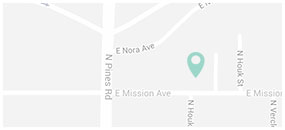Impacted Wisdom Teeth
Wisdom teeth are the third molars. They are the teeth in the upper and lower jaws that are the furthest back in the mouth. These teeth begin to form at age 12 and can erupt into the mouth by the late teens. Before they erupt they are called un-erupted or impacted.
What problems can wisdom teeth cause?
Infections: Many wisdom teeth cannot erupt into the mouth because the size of the jaw is simply too small. The wisdom tooth remains partially buried in the bone and soft tissue forming a pocket than cannot be cleaned effectively. This pocket provides an ideal environment for bacteria to grow resulting in an infection. The normal signs of infection include: swelling, pain, warmth, redness, and may be accompanied by the inability to open the mouth or swallow.
Cysts: A cyst is a fluid filled sac that can develop around impacted wisdom teeth. The cyst may destroy a significant amount of bone as it becomes larger. Unlike the infected wisdom tooth, there is usually not any pain or swelling until it is quite large.
Tumors: An un-erupted or impacted tooth has a follicle around the crown, which allows it to erupt normally in the mouth. When this tooth is unable to erupt this follicle can transform into tumors of different kinds. The majority of these tumors are benign but can still be aggressive and destroy significant amounts of bone.
Crowding: Wisdom teeth can push front teeth as they erupt resulting in a crowded appearance.
Damage or decay: Food and debris can easily be trapped between the wisdom tooth and the tooth in front of it resulting in decay that can be very difficult to treat. In addition, as the wisdom tooth erupts it can apply pressure on the tooth in front of it resulting in damage to the tooth.

